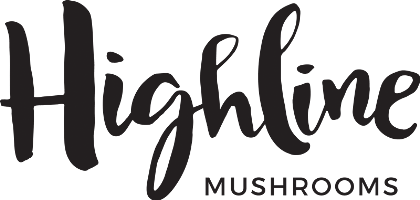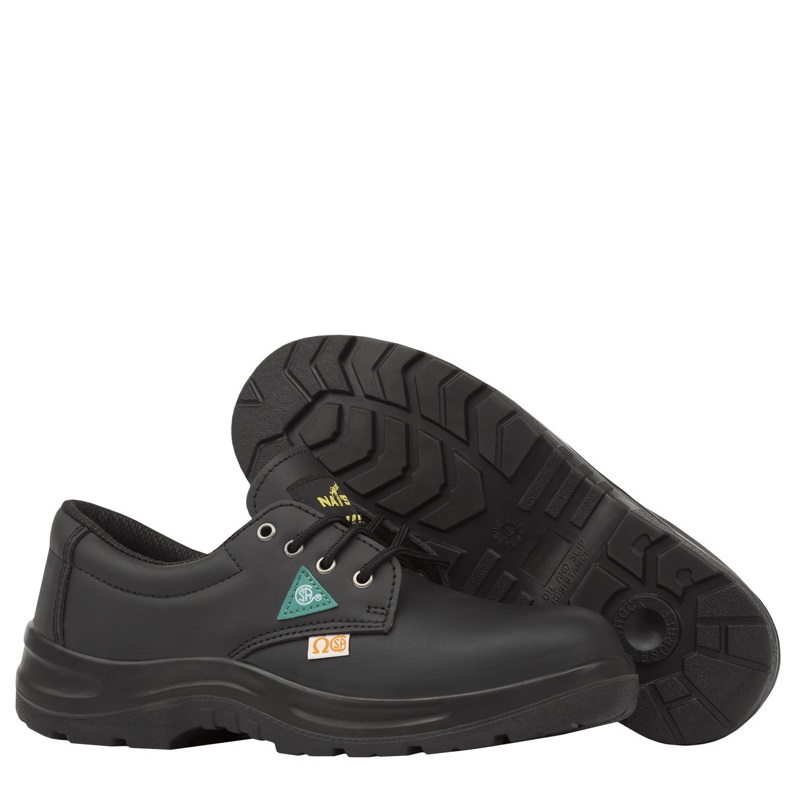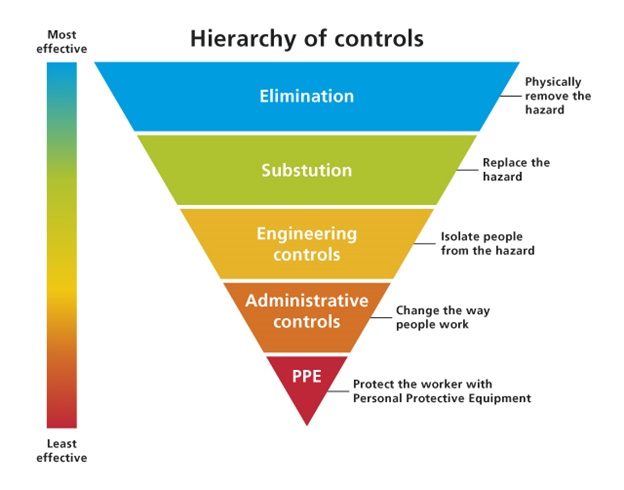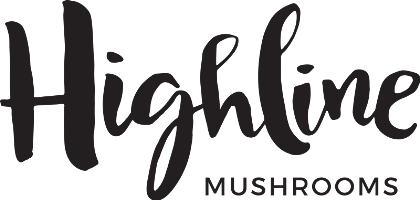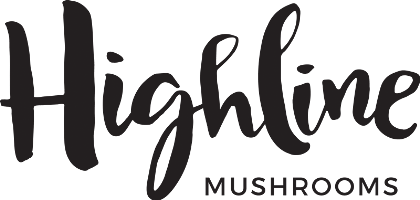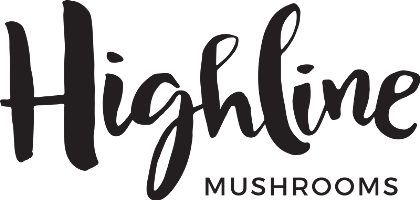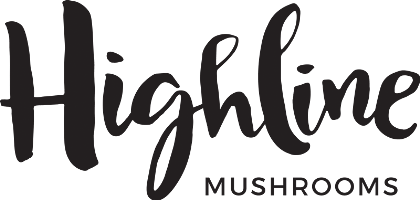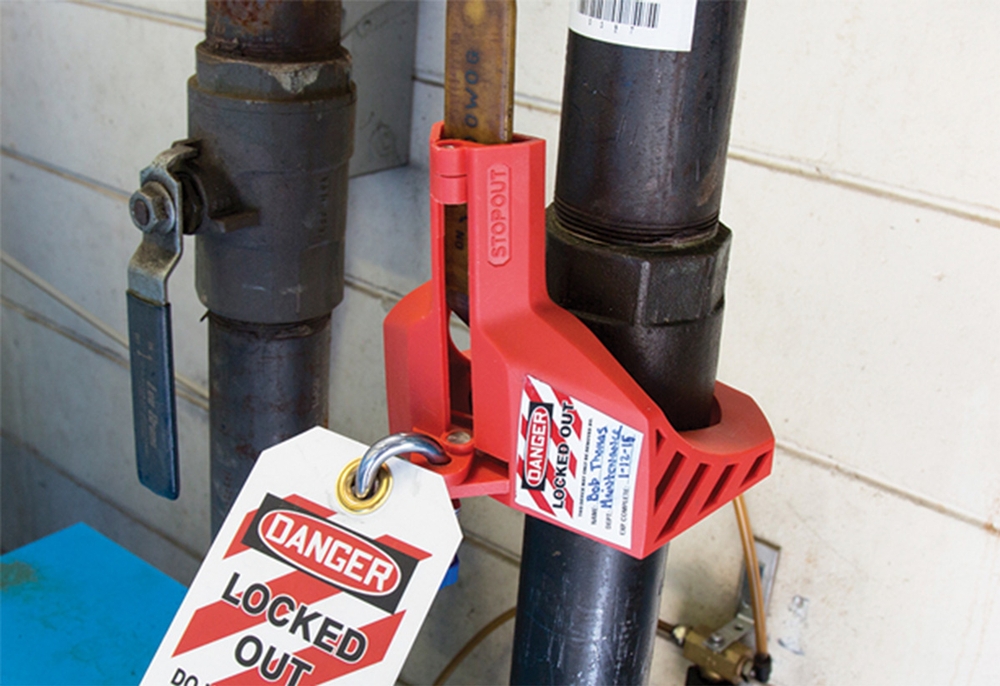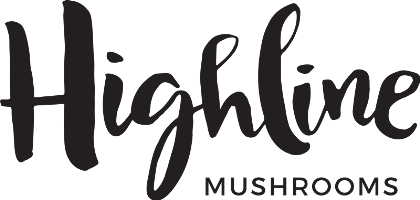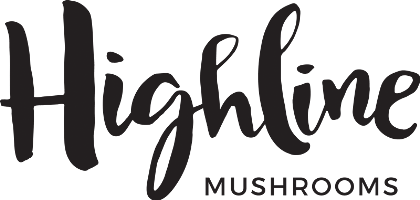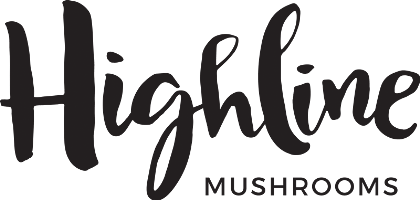Information
-
Inspection No.
-
Conducted on
Inspection Information
-
Facility Inspected
-
GeoTag Location
-
Departments Inspected
-
Areas Inspected:
- Area 1 - Packing North
- Area 2 - Packing South
- Area 3 - Harvest North
- Area 4 - Harvest South
- Area 5 - Tunnels
- Area 6 - Wharf and Maintenance
- Other
-
Please specify inspection area:
-
Name of JHSC Member:
-
Name of Accompanying Supervisor:
Inspection Items
1.0 Previous inspections
-
Has the previous workplace inspection sheet been reviewed?
-
Are there any outstanding/not completed items on previous inspection?
-
List item(s)
2.0 Electrical
-
Is the area around electrical panels clear of debris and obstructions? (3 ft in front of the panel and on each side)
Tap to enter information
-
There must be a 3 foot area clear around electrical panels. If a panel is blocked, notify the area supervisor of the issue immediately.
-
Is all electrical equipment in good condition? (no frayed or damaged cords, broken outlets?)
-
Immediately inform the area supervisor. DO NOT touch the extension cord if there is evidence of damage or it is not water proofed.
-
Are extension cords used only for temporary power needs and water proofed?
-
Immediately inform the area supervisor. DO NOT touch the extension cord if there is evidence of damage or it is not water proofed.
3.0 General Lighting
-
Is the area well lit?
-
Lighting is not flickering.
-
Are there any dark areas?
-
Are any lights burnt out?
-
Please indicate how many and the location where the lights are burn out
4.0 Housekeeping
-
Is the floor clear of loose material, pallets, debris, tools, etc?
-
Are the floors clear of anything slippery, oily or wet?
-
Doors and emergency exits are accessible, (not blocked) and functional
5.0 Stairways, Hallways & Aisles
-
Are there stairways in the inspection area?
-
Are the stairways well lit?
-
Are the handrails, handholds in place?
-
Are the stairs in good repair?
-
Are stairwells clear and unblocked?
Tap to enter information
-
Are mirrors installed at blind corners?
-
Are traffic mirrors in good condition?
6.0 Materials Handling & Storage
-
Are storage areas free from tripping hazards?
Tap to enter information
-
Do materials interfere with walkways?
-
Are materials stored neatly and safely?
-
Are there stepladders or stools to get to materials on higher shelves
-
Are heavy and large objects stored on lower shelves?
7.0 WHMIS/Hazardous Materials
-
Are there WHMIS/hazardous materials used in the inspection area?
Tap to enter information
-
Is there a current SDS sheets (less than 3 years old) for the product(s) available?
Tap to enter information
-
Advise Department Supervisor to update SDS inventory
-
Are there secondary containers used?
Tap to enter information
-
Picture of Secondary container
-
Are there Workplace Labels used?
Tap to enter information
-
Are the labels available and up to date?
-
Inform the area supervisor of the missing label(s) and the requirement to label the material.
-
Is there an eyewash station or eyewash bottle within 10 feet and free of obstruction?
8.0 Elevating and Lifting Equipment
-
Are there scissor lifts or lifting devices in the inspection area?
-
Are elevating / lifting devices used only within weight capacity?
Tap to enter information
-
Are capacities posted on the equipment?
Tap to enter information
-
Advise Department Supervisor
-
Do associates put on a fall arrest system and attach to an anchor point?
-
Immediately inform the supervisor of the area of the non-compliance
-
Are fall arrest systems in good condition and free of corrosion, rips, tears, loose stitching and tell tails?
-
Immediately remove from service if defective and alert the area supervisor
-
Are lifting devices inspected yearly and the inspection listed on the device?
Tap to enter information
-
Are the pre-use inspections completed?
Tap to enter information
-
Yearly inspection records must be keep showing; date of inspection, lifting capacity of the device
-
Take picture of the inspection sticker
-
Do operators have their current lift ticket on their person?
Tap to enter information
-
Operators must have proof of training in order to operate equipment
-
Are chain hoists, ropes and slings marked for load capacity?
9.0 Warehouse & Shipping
-
Is there a shipping dock in your inspection area?
-
Are dock platforms, bumpers, stairs and steps in good condition?
-
Is there signage for drivers to chock their tires and other safety precautions?
-
Is there racking in the dock area?
-
Is racking in good condition (no visable damage, missing braces?)
-
Does the racking have a load capacity sticker?
-
Take picture of load capacity sticker on racking
-
Are there contact barriers infront of racking posts to prevent accidental contact?
-
Are there lockout devices and trailer stands available to associates to use?
-
Are trucks locked out or have a trailer stand in place?
10.0 Safety Environment Items
-
Associates who stand for longer than 1 hr at a time have ergonomic mats <br>
-
The area has adequate ventilation/airflow
-
Is there evidence of dust or flammable material build up in the area?
-
Is there any evidence of electrical panels being exposed to water or condensation?
11.0 AED
-
First Aid Stations are indicated with a sign
-
AED Units are indicated with a sign
-
AED Battery reading is, "OK"
12.0 Security
-
Exterior doors are only accessible with a key card/fob
-
Evacuation Points and shelter areas are identified with a sign
-
Lighting is adequate in parking areas and out door walking areas
-
Alarm system functioning (if applicable)
-
Parking Lot lines are painted and applicable signage is present
13.0 Labels and Safety Items
-
Safety labels and warnings are clearly visible and in good condition on applicable items
-
Equipment and Emergency stations are properly labeled with warning, caution and hazard signs
-
Seasonal controls (salt, sunglasses, high-vis clothing) are in use
-
LOTO SOP's posted at or near machines
-
What SOPs are missing?
14.0 Noise
-
Is it hard to hear in the area?
-
Are associate required to wear ear protection?
-
Are associates wearing hearing protection?
15.0 Ladders
-
Are there ladders or stools in the inspection area?
-
Stools and ladders in good condition?
-
Ladders do not demonstrate signs of alteration or repairs.
-
The correct ladder type and height is being used for the job task.
-
Feet and braces of ladders are in good condition.
-
There are no loose bolts, no cracks, no splits in frames, excessive rust/corrosion observed.
-
Rails are not twisted or distorted.
-
Steps are not missing, loose or broken.
16.0 PPE
-
PPE is provided to associates
-
PPE is inspected by supervisors
-
PPE stations are properly stocked, in good condition, and prevent unauthorized use.
-
Associates PPE is in good condition
-
Associates are wearing PPE required in the area
-
Inspect an associates shoes at random
-
Are treads atleast 3mm deep andin good condition?
-
The associate must leave the are until appropriate footwear is worn - alert the department supervisor to the issue
-
Is there a distinct heel, sole section of the footwear?
-
The associate must leave the are until appropriate footwear is worn - alert the department supervisor to the issue
-
Is there a CSA tag present on the footwear? (exception for harvesters)
-
The associate must leave the are until appropriate footwear is worn - alert the department supervisor to the issue
17.0 Machinery and Guarding
-
Are there machines and/or powered tools in the inspection area?
-
Guards and protective devices are in place and prevent associates from coming in contact with a moving or free wheeling part of a machine.
-
Immediately inform the area supervisor of the issue and inform them of the requirement to stop work until the guard is secure and meets the CSA requirement.
-
Labels are present to warn associates of the danger of unsafe actions relating to the equipment
-
Lockout Tagout Maps and SOPs are installed on the machinery.
-
Are pre-work inspections completed for the area?
-
Are controls and e-stops in good working condition?
-
Immediately inform the department supervisor and lock the machine out of service until it can be repaired
-
Lockout Stations are properly stocked
18.0 Vehicles and Powered Equipment
-
Are there vehicles and/or powered devices in the inspection area?
-
Are pre-use inspection books filled out prior to use?
-
Do pre-use inspections book contain enough forms for the next 2 weeks?
-
Vehicles do not indicate any form of disrepair
-
Associates are trained and authorized to use equipment they are operating
-
Horns are sounded by operators at doorways, walkways, corners, blind spots, when passing other vehicles or pedestrians?
19.0 Fire and Building Code
-
Doors are clear of obstruction in the inspection area
-
Fire extinguishers are inspected within the last 30 days and have a sign indicating their location
-
Where is the extinguisher located?
-
Emergency exits have panic/push bars installed to allow for quick and safe exit from the building
-
Which exits are non-compliant?
-
Emergency exits are indicated with a sign
-
Which exit(s) are non-compliant?
-
Fire extinguishers are present within 10 feet of hazardous materials, exits and electrical panels
-
Fire evacuation maps are posted through out the facility and at/near exits.
-
Severe weather shelter area sign and/or indicators are clearly labeled and evident in the inspection area
20.0 Trolley and Rail Use
-
Are there harvest trolleys in use in your inspection area?
-
Trolley welds in good condition (inspect platforms at random)
-
The unit must be taken out of service and the supervisor alerted to the issue
-
Trolleys move freely and unhindered
-
Trolley system top and bottom rails in good condition and free of breaks in welds, corrosion, bends, twists, warps, etc.
-
The area must be taken out of service and the supervisor alerted to the issue
-
Are there electrical or hand crank operated trolleys in use?
-
Trolley hand cranks and cables in good working condition
-
The unit must be taken out of service and the supervisor alerted to the issue
-
Cable systems are in good condition
-
The unit must be taken out of service and the supervisor alerted to the issue
-
Trolleys move freely and unhindered
-
Trolley system top and bottom rails in good condition and free of breaks in welds, corrosion, bends, twists, warps, etc.
-
The unit must be taken out of service and the supervisor alerted to the issue
-
Trolley pins in place where required
-
Electric carts are in good condition and show no signs of disrepair
-
The unit must be taken out of service and the supervisor alerted to the issue
-
E-stops and controls in good condition and functioning
-
The unit must be taken out of service and the supervisor alerted to the issue
21.0 Violence, Harassment and Bullying
-
Associates do not demonstrate impairment mentally, physically or emotionally.
-
Was a supervisor reachable in the area?
-
Associates do not work alone for more then 15 minutes and have a plan in place if working alone is required
22.0 Change Management
-
Is there any new or modified equipment in the department?
-
Have there been any recent changes to the processes? i.e. equipment moved or relocated?
-
Was the JHSC involved at the onset of the process change or procuring the equipment?
-
Was a Pre-start completed with the JHSC prior to it being released to production?
23.0 Contractor Safety Compliance
-
Are there any contractor(s) in the department performing work?
-
Has the contractor(s) signed in at the front office?
-
Has the contractor(s) completed the Highline COVID19 Screening in at the front office?
-
Has the contractor(s) completed contactor safety training prior to performing work?
24. New and Young Associates
-
Are there any new or young (Age 16-24) associates in the inspection area?
-
Have you introduced yourself to the new/young associate?
-
Please ensure to introduce yourself to any new/ young workers in the inspection area.
-
Name of Associate Communicated with:
Safety Board
-
Is there a Safety and Wellness Information board in your inspection area?
-
Highline Mushrooms Safety and Wellness Policy current, present and in good condition
-
Employment Standards Information present and in good condition
-
Worker Rights Information present and in good condition
-
Workers compensation (1,2,3,4, WBC, WorkSafe Injury) Poster present and in good condition
-
Highline Mushrooms Violence, Bullying and Harassment policy and standard current, present and in good condition
-
JHSC Meeting Minutes current, present and in good condition
-
JHSC Member Photos and Contact information current, present and in good condition
-
Health and Safety at Work poster present and in good condition
-
Ministry of Labour field reports, orders, tickets and fines current, present and in good condition (if applicable)
-
Injury Reporting and Disability and Claims poster current, present and in good condition
-
List of first aiders present?
-
Emergency Contact Numbers current, present and in good condition?
-
A copy of the OH&S Act is current, present and in good condition
-
A safety and wellness policy and information binder is current, present and in good condition
-
Important information - Hazards, substances, safety alerts, etc. (if applicable)
Associate Questionnaire
-
At random, ask an associate if they can be interviewed for a quick safety questionnaire
-
Where do you go in the event of an emergency (fire, tornado, violence)?
-
Where is the first aid station located?
-
What do you do if you are involved in an incident (injury, property damage, near miss) in the workplace?
-
Is PPE readily available for you to complete your job tasks?
-
Do you feel you are properly trained to conduct your work duties?
-
Why do you feel you have not adequately been trained?
-
Do you have any suggestions for making your working environment safer?
-
Comments
-
Surveyed Associates Name and Signature
Observed Hazards
-
Hazards observed during inspection - One (1) Risk Assessment is Required per inspection.
Class A - Condition or practice with potential for a Critical Injury or Death
Class B - Condition or Process with potential for serious injury or property damage Class C - conditions or practices with potential for minor injury or property damage
Hazard observed
-
Use this tool to determine the Risk level rating
RECOGNIZE
-
HAZARD
-
What activity or hazard could cause injury or illness?
-
What hazard groups can cause injury, illness, property damage or damage to the environment? (select all that apply)
- Physical Safety
- MSD
- Chemical
- Physical Agent
- Psychosocial
- Biological
- Manual Material Handeling
-
What is the source of the hazard to the associate/environment?
- Compressed Air
- High Pressure Fluids
- Confined Space
- Driving
- Electrical
- Material Handling
- Material Storage
- Molten Material
- Machine or Equipment
- Slip or Trip
- Temperature
- Vehicular Hazards
- Working at Heights
-
What is the potential outcome of exposure to the hazard?
- Skin injection
- Skin injection
- Asphyxiation
- Engulfment
- Entrapment
- Explosion
- Collision
- Contact with pedestrian
- Other
- Stress
- Violence
- Arc flash
- Electrocution
- Fire hazard
- Crushing
- Fire hazard
- Laceration
- Puncture or injection
- Sharp edges - laceration/contusion
- Struck by
- Worker contact
- Fire hazard
- Trip hazard
- Worker contact
- Burn
- Fire
- Flying particles/materials - impact or injection
- Full body pinch point - crushing
- Grinding/Sanding - friction & abrasion
- Impact - stabbing & puncture
- In-running nip - entanglement, drawing in
- Moving part - entanglement, cutting, shear
- Pinch point - crushing or shear
- Rotating or sharp part - cutting or shearing
- Rotation - entanglement
- Sharp edges - laceration/contusion
- Worker contact – laceration/contusion/puncture/other
- Falls to same height
- Burn/Scald
- Falling to surface below
- Objects falling on workers below
- Other
-
What is the source of the hazard to the associate/environment?
- Awkward Posture
- High Force Demands
- Poor Tool or Equipment Design
- Poor Workstation Design
- Repetition
- Static Posture
-
What is the potential outcome of exposure to the hazard?
- MSD injury
- Other
-
What is the source of the hazard to the associate/environment?
- Combustible
- Compressed Gas
- Corrosive
- Flammable
- Reactivity
- Toxic
-
What is the potential outcome of exposure to the hazard?
- Fire/Explosion
- Violent release of energy/gas
- Acid - skin burn/mucous membrane exposure
- Acid/base incompatibility reaction
- Alkaline - skin burn/mucous membrane exposure
- Liquid - Fire/explosion
- Gas - Fire/explosion
- Dangerous reaction
- Absorption - Illness
- Dermatitis
- Ingestion – Illness
- Ingestion – Carcinogen
- Inhalation – Illness
- Inhalation - Carcinogen
- Injection – Illness
- Injection - Carcinogen
-
If Hazardous materials are present, are there SDS sheets available to associates at all times and are associates trained in WHMIS 2015?
-
What SDS sheet or training is required?
-
What is the source of the hazard to the associate/environment?
- Extreme Cold
- Extreme Heat
- Lighting
- Noise
- UV Exposure
- Vibration
-
What is the potential outcome of exposure to the hazard?
- Cold stress
- Heat stress
- Hazard exposure due to lack of visibility
- Eye strain
- Hearing loss
- Skin or eye damage
- Hand/Arm - MSD or vascular disorder
- Whole body - Back pain
-
What is the source of the hazard to the associate/environment?
- Boredom
- Harassment
- Stress
- Violence
- Work overload
- Long hours
-
What is the potential outcome of exposure to the hazard?
- Mental Illness
- Violent Situation
- Physical Health Decline
-
What is the source of the hazard to the associate/environment?
- Bacteria
- Mold
- Viral
-
What is the potential outcome of exposure to the hazard?
-
What is the source of the hazard to the associate/environment?
- Bending
- Lifting
- Pushing or Pulling
-
What is the potential outcome of exposure to the hazard?
-
Hazard Images and DIagrams
-
Additional Comments
ASSES
-
Assessment
-
What is the probability of an incident occurring?
-
How often is the job task interacting with the hazard?
-
How severe could an incident be?
- 1 - Negligible/First Aid
- 2 - Minor/Marginal
- 3 - Critical/Medical Attention
- 4 - Catastrophic/Lost Time
- 5 - Fatality/Total System Failure
-
What is the risk level?
- Class C (1-2): A condition or practice that is likely to result in minor non disabling injury or illness (first aid, property damage)
- Class B (2-3): A condition or practice that is likely to cause serious injury or illness resulting in temporary disability (medical aid)
- Class A (4-5): A condition or practice that is likely to cause permanent disability, loss of life or body part - Immediate action must be taken
-
If immediate action is required; issue a work order from the app to the Maintenance Manager of the location.
-
What is being done immediately to prevent an incident?
-
What is the Risk Priotrity?
-
Additional Comments:
CONTROLS AND RECCOMENTDATIONS
-
Use this tool when considering control implementation and recommendations.
Control and Recommendation
-
What legal requirements, codes, benchmarks or standards apply to the identified hazards, work processes or work activities?
- OHSA
- CSA
- Electrical
- Fire/Building
- Other
-
What legal requirement is in non-coompliance?
-
What is currently being done to eliminate or control the hazard?
-
RECCOMENDED ACTION - What future actions are needed to eliminate or control hazards? Indicate recommendations here - include diagrams and photos if necessary.
-
Who is responsible for overseeing the change?
-
Are controls immediately put into place or recommended introducing a new hazard? (congestion, confined space, etc.)
-
Describe in detail what the new hazard identified is:
-
Will new training be required for the new controls put into place?
-
What training will be required?
-
Are any labels, signs or decals required if controls are put in place?
-
What labels, signs or decals are required?
-
Is additional PPE required?
-
What PPE is required?
-
Is a Safety Alert required or alteration to a hazard checklist?
-
What action is required?
-
What CSA Standard is in non-compliance?
-
What is currently being done to eliminate or control the hazard?
-
RECCOMENDED ACTION - What future actions are needed to eliminate or control hazards? Indicate recommendations here - include diagrams and photos if necessary.
-
Who is responsible for overseeing the change?
-
What electrical code item is non-compliant?
-
What is currently being done to eliminate or control the hazard?
-
RECCOMENDED ACTION - What future actions are needed to eliminate or control hazards? Indicate recommendations here - include diagrams and photos if necessary.
-
Who is responsible for overseeing the change?
-
What fire/building code item is non-compliant?
-
What is currently being done to eliminate or control the hazard?
-
RECCOMENDED ACTION - What future actions are needed to eliminate or control hazards? Indicate recommendations here - include diagrams and photos if necessary.
-
Who is responsible for overseeing the change?
-
Describe the non-compliance
-
What is currently being done to eliminate or control the hazard?
-
RECCOMENDED ACTION - What future actions are needed to eliminate or control hazards? Indicate recommendations here - include diagrams and photos if necessary.
-
Who is responsible for overseeing the change?
-
Recommended timeline of completion:
-
Additional Comments:
EVALUATE
-
Evaluation
-
Following recommended control implementation, how likely is the hazard to cause injury or illness now?
-
Following recommended control implementation, how often is the job task interacting with the hazard?
-
Following recommended control implementation, how severe could an incident be?
- 1 - Negligible/First Aid
- 2 - Minor/Marginal
- 3 - Critical/Medical Attention
- 4 - Catastrophic/Lost Time
- 5 - Fatality/Total System Failure
-
Following recommended control implementation, what is the level of risk?
- Class C (1-2): A condition or practice that is likely to result in minor non disabling injury or illness (first aid, property damage)
- Class B (2-3): A condition or practice that is likely to cause serious injury or illness resulting in temporary disability (medical aid)
- Class A (4-5): A condition or practice that is likely to cause permanent disability, loss of life or body part - Immediate action must be taken
-
Additional Comments:
First Aid Room
-
Only complete this page if you have been designated to inspect the first aid room. If you have not been selected to inspect the first aid room, please continue to the next page.
-
Is there a First Aid Room in your Inspection Area which you are required to inspect?
-
First Aid Stations are indicated with a sign
-
1 Dressing Scissors (2)
-
2 Dressing Forceps (Tweezers) (2)
-
3 Safety Pins (24)
-
4 Cotton-Tipped Applicators (Q-tips)(50)
-
5 Antiseptic Wipes(24)
-
6 Adhesive dressings individually wrapped (bandaids)(60)
-
7 2" Sterile Gauze Pads (48)
-
8 3" Sterile Gauze Pads (48)
-
9 1" Gauze Bandages (12)
-
10 2" Gauze Bandages (8)
-
11 4" Gauze Bandages (4)
-
12 Absorbent Cotton - Cotton Balls (25)
-
13 Triangular Bandages (12)
-
14 Splints of assorted sizes
-
15 Splint padding (2)
-
16 Hot and cold running water
-
17 Stainless steel washbasins (3)
-
18 Cabinet for storing the dressings (1)
-
19 Garbage receptacle with lid (1)
-
20 Couch or bed to lie on (1)
-
21 Stretcher (1)
-
22 Blankets (2)
-
23 CPR Mask (1)
-
24 Non-Latex Gloves - Size Small (2 pairs)
-
25 Non-Latex Gloves - Size Medium (2 pairs)
-
26 Non-Latex Gloves - Size Large (2 pairs)
-
27 Valid Standard St. John Ambulance Manual
-
28 Burn Gel (10)
-
29 Splinter Remover (5)
-
30 After Bite (10)
-
31 Ice Packs (10)
First Aid Station
-
Is there a first aid station in your area that you are required to inspect?
-
Safety Pins (24)
-
Adhesive Dressings - Sterile (24)
-
3" Sterile Gauze Pads (12)
-
Rolls of 2" Gauze Bandages (4)
-
Rolls of 4" Gauze Bandages (4)
-
Triangular Bandages (6)
-
Roll Up Splint
-
Splint Padding (2)
-
Sterile Surgical Pads for Pressure Dressings (4)
-
CPR Mask (1)
-
Roll of Adhesive Medical Tape (1)
-
Antiseptic Wipes (24)
-
Non-Latex Gloves - Size Small (2 pairs)
-
Non-Latex Gloves - Size Medium (2 pairs)
-
Non-Latex Gloves - Size Large (2 pairs)
-
Valid FIRST AID/CPR Manual
-
First Aid Reg 1101
-
Ice Pack (1)
-
Burn Gel (1)
-
Comments, Recommendations, Items of Concern
-
Comments:
Sign Off
-
JHSC Rep Name and Signature
-
Supervisor or Manager Name and Signature
